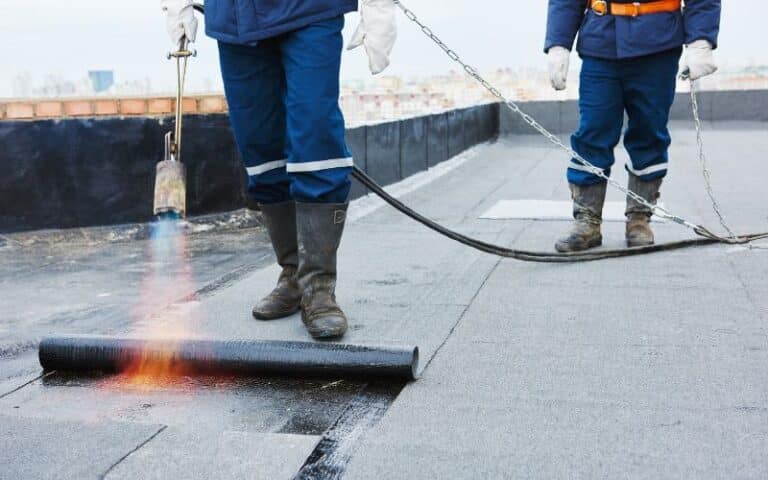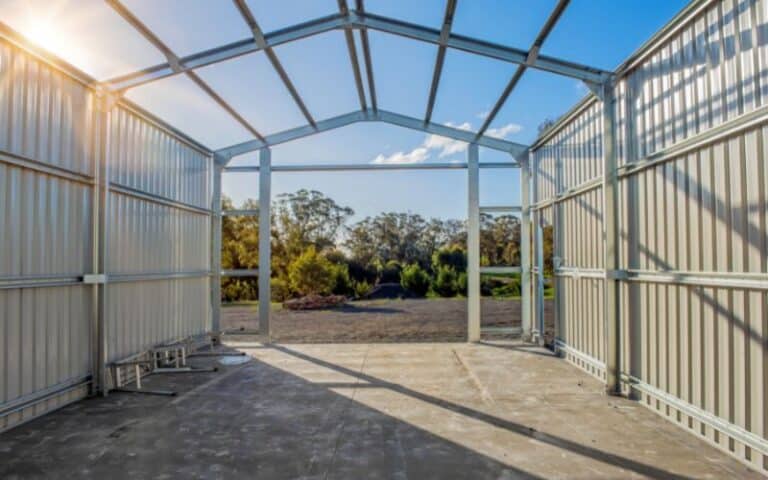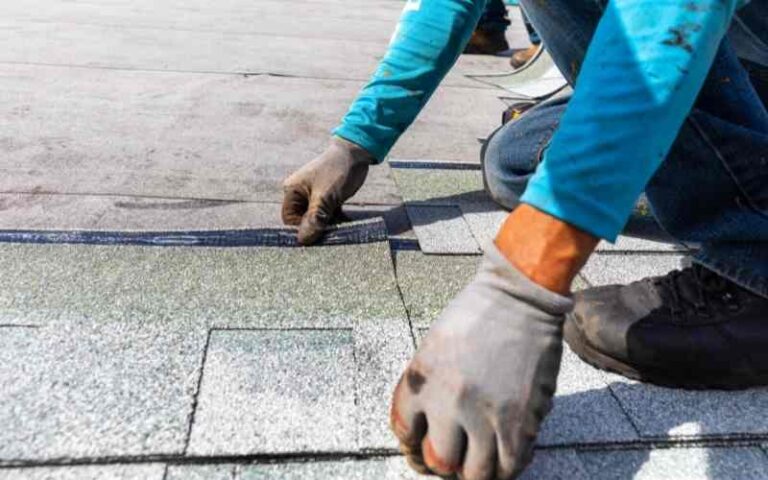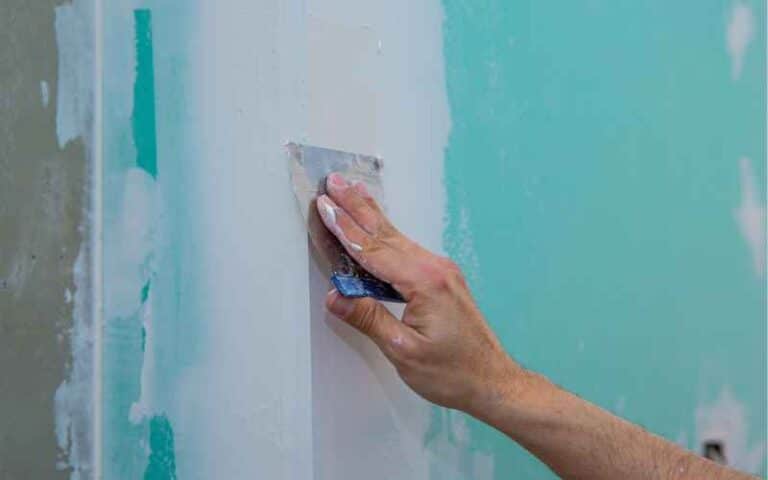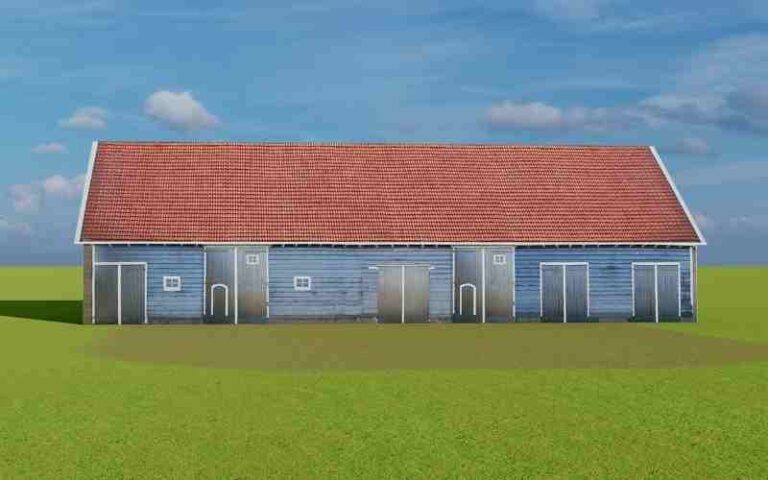Roofing underlayment is an essential part of any roofing construction. It plays a significant role in restricting external elements like wind and moisture from penetrating the room.
But sometimes, this felt underlayment restricts the air circulating the roof structure and does not keep environmental impurities away from your home.
With the tight and sealing property of roofing felts, are they also breathable?
Roofing felts are breathable, but this depends on the roofing felt model. Breathable roofing felts, allowing the flow of air around your roofing structure. It also protects the roofing from harsh weather, allowing vapors in the roofing structure to escape into the air.
Ready for a Roofing Quiz?
What Is Breathable Roofing Felt?

Breathable roofing felts are light roofing wraps that allow built-up vapor in the roof to pass through it out into the air. You may know this roofing felt like a breathable roof membrane.
The contractors often use breathable roofs during construction in areas where the outer tiles are not moisture-resistant.
The breathable membrane is at the colder part of the roofing insulation to keep moisture from penetrating the roof structure.
Breathable roofing membranes have three features:
- Water vapor resistance
- Vapor permeability
- Waterproof.
Though breathable roofing membranes may be waterproof, they are not resistant to large water volumes during harsh weather, like storms.
The thickness of breathable felt is also a determining factor for the quality of a felt roof. The thicker the breathable membrane, the higher the water vapor permeability.
Therefore, a thicker felt roof breather allows air circulation from the roofing structure better than the thinner roofing felt. This reduces the effect of condensation on the roof structure.
The main benefits of breathable roofing membranes are:
- To keep rainwater from penetrating through the exterior part of the roof.
- It serves as a ventilator that allows in-built moisture to escape.
- It restricts air movement around the roofing walls.
An average building can hold liters of water from the amount of moisture in the house. Also, if the house is warm with a cooler temperature outside, this will increase the moisture level of the house.
This is one reason you should install breathable felt roofing on your roofing structure.
Is My Roof Felt Breathable?
This depends on the model and type of roofing felt you installed. Some old roofing felts are non-breathable. If your roofing felt is stiff and resinous with a 10mm square grid spacing, it is most likely non-breathable.
However, breathable roofing is often light and has a canvas-like texture.
Why Use Breathable Roofing Felt?
Breathable roofing felt has more water vapor permeability and has a lesser condensation effect than the non-breathable alternative. It is also waterproof and allows vapor to escape.
So, some reasons you should use Breathable roofing membranes are:
- Allows circulation of air and flow of water vapor in the roofing structure.
- It allows the escape of condensation out of the roof.
- It is waterproof.
- It is best used for roof structures with no ventilation, though it should not be the only source of ventilation.
- It is common in new buildings.
Unlike the breathable roofing membrane, its alternative, the non-breathable roofing membrane, has a higher condensation effect. It is most suitable for roofs with existing ventilation.
Some downsides of using unbreathable roof felts are:
- It obstructs the circulation of water vapor.
- It does not allow condensation to escape as effectively as the breather roofing felt.
- Therefore, it needs more ventilation than its alternative.
Is Breathable Roofing Felt Waterproof?
Breathable roofing felt is highly waterproof. It protects the inner roof structures from dust and rainwater.
If placed appropriately, snow or rain droplets are kept from filtering into the roof structure through the roof shingles.
A breathable roof membrane has a layer of waterproof material on its surface that keeps it from leaking water into the roof structure.
The roof breather is rather sturdy even though it is light and does not crack easily but loses quality over time.
It can last for about 18 years. The waterproof material resists water penetration and protects the building from leakages.
Breathable Roofing Felt Problems
Like every device, breathable roofing felts are not 100 percent efficient. It also has disadvantages of its own.
Condensation and relatively high cost are the main downsides of using breathable roofing felt.
Condensation and Dampness
Condensation occurs when the warm air in the house or building comes in contact with the cool roof areas.
When the different air temperatures meet, they will condense and form droplets of water which can damage home appliances and walls.
In addition, the dampness from the condensed moisture can cause the building to fall apart and lead to health issues.
Some of its effects are:
- Damage to joist structures.
- This can lead to floor and wall woodwork rot.
- Causes damage to decorations like paintings and wallpapers.
- It causes mold growth.
- Reduced insulation performance and increased heating bill costs.
- Weakens the timber in the roof structure, which can release odors.
Cost
Breathable roofing felt is more expensive than its alternative if you work with a tight budget, this might be a downside.
Introducing cost-effective and energy-efficient measures to your home to maintain insulation is ideal. But there are side-effects like the condensation that might cause irreparable damage to your homes.
Ensure your roofing has enough ventilation to allow the flow of hot air out of the roof.
Do You Need Roof Vents with Breathable Felt?
Roof vents are essential for all types of breathable felts. It is a determining factor for keeping condensation from affecting your house.
Therefore, it is vital for the complete protection of your building.
Insulation might be your top priority as a homeowner, leaving ventilation out to keep the cold air out. Complete insulation might keep warm air in and reduce the cost of spending on heating appliances.
However, neglecting ventilation can be a costly venture for the future of your house.
How To Install a Breathable Membrane?
The first phase of breathable membrane installation is to fit the eaves support tray at the roof side. The breathable roof felt is then placed parallel to the tray fitting.
Ensure you have the right tools and you have consulted the product guidelines. Next, you can install breathable roof membranes beneath the tile support in the colder part of the insulated roof.
To install a breathable roof membrane, you will need:
- Breathable Membranes – you should not leave out the main component of the installation. Ensure it is a high-quality roof breather. One of the best breathable membranes is the SuperFOIL breathable membrane.
- Clout nails – these can be removed easily in case of fixing.
- Hammer.
- Timber Batten – This may be needed if the overlap of the roof felt does not fit with the old timber Batten in the roof structure.
To Install the breather membrane:
- Start with eaves. Fit the eaves support tray along the roof eaves.
- Roll out the breathable roof felt parallel to the roof eaves. Constantly check the manufacturer’s manual to ensure you are doing it right.
- Drape the roof breather and ensure it dips in between the wooden rafters. This will allow the free flow of rainwater from the felt to the eaves.
- Place the clout nails carefully on the breathable roof felt so it is on the line on which the second felt length overlaps.
- If there’s any timber Batten not corresponding with the overlap, add another timber Batten to the area.
- Ensure the drapes are intact when adding the battens to allow efficient water drainage.
- If your roof needs ridge ventilation, cut out the breathable felt on both ridge sides to create air vents.
- In the case of roof valleys, extend the roof felt on each side by 300mm, from the valley center.
- If you have to work around windows and chimneys, you will need to cut out the roof felt and turn it sideways against the window or roof chimney.
If this is a complex process for you, consult a roof installation expert.
What Products Can You Use to Ventilate Your Roof?
Roof ventilation extends your roof shelf life and also saves you the cost of spending on cooling and heating systems.
There are two main kinds of air vents:
#1. Exhaust Air Vents
If the air in the roof structure is hot and stagnant, it can cause mold. For this, you should install exhaust air vents that increase air circulation in the roof structure.
#2. Intake Air Vents
Cool air comes into the attic or roof structure from the intake air vents. It is often at the lower part of the roof. The intake vent replaces the cool air with damp and stagnant air in the breathable roofing felt.
Conclusion
Roofing felt is also breathable despite its tightly sealing property. The bitumen coating on its surface keeps it waterproof and allows vapor out of the roofing structure.
A breathable roofing membrane prevents condensation but should not be the only source of ventilation for your roofing structure.

